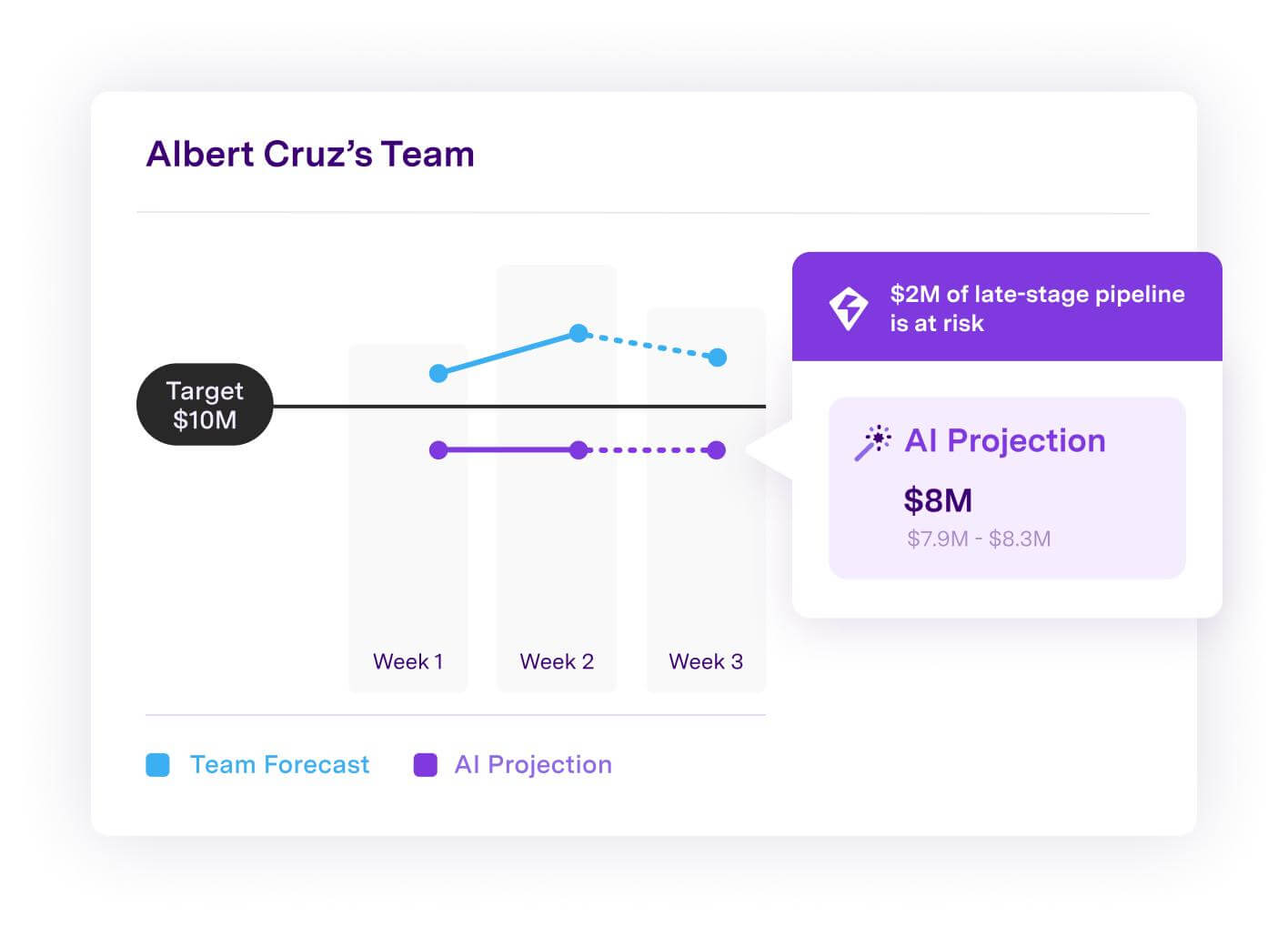11 Surefire Ways to Shorten Your Sales Cycle
Sales influencers have hypothesized about every phase of the sales cycle.
They’ve come up with lots of tips and tricks over the years, mostly based on personal experience.
But none of those influencers had access to the AI-driven sales analytics we use here at Gong.io.
They tell us exactly what works and what doesn’t on sales calls.
Our team of data scientists has analyzed more than 1,000,000 recorded sales calls.prospect with an objection
For data heads, that’s like a mountain of gifts just waiting to be unwrapped.
In this round, we analyzed the best way to speed up every phase of your sales cycle.
And now, we’re sharing those findings with you as 10 surefire steps to a killer sales cycle.
Because who doesn’t want to generate more revenue in less time?
Hero status, coming up.
1. The Faster You Ramp Your Reps, the Sooner New Deals Will Close
Looking for a massive ROI?
Try onboarding your new hires faster.
That’s it, that’s all. You can practically stop reading here. (But don’t. There’s so much more to come.)
When you automate your onboarding process, reps come up to speed faster. And the faster they stop training and start working, the sooner they’ll hit quota and earn for you.
So automate standard parts of your onboarding process and use everyone’s time as efficiently as possible.
Use your own time to bring in revenue instead of doing really basic training with your reps.
Know that your reps will come up to speed faster than ever with an automated process.
And you’ll be there to answer the tough questions when they’re ready to soar.
Here’s an extra little motivator: Cutting their ramp time can add tens of thousands of dollars to their first year’s earnings. If you hire more reps, you compound the effect.
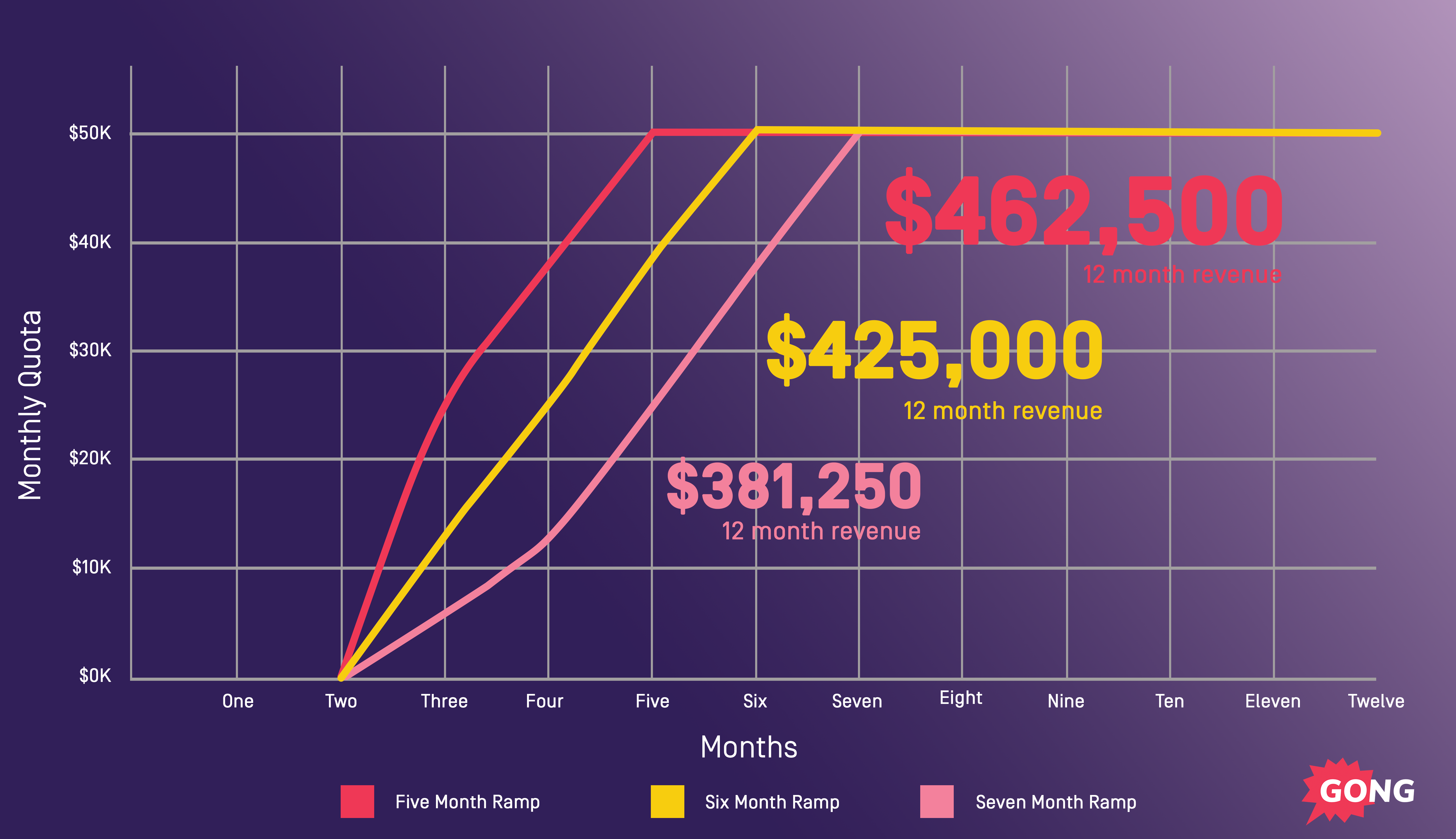
You have computers. Use them. Automate as much of the training process as possible.
2. Thoroughly Explore Objections to Avoid Holdups
Lots of reps slip up when they try to answer a prospect’s concerns.
How so?
They get so flustered when they hear an objection, they often address the wrong issue.
The only thing worse than a prospect with an objection is a frustrated prospect who thinks you aren’t paying attention to their question, or that you don’t have the smarts to understand them.
And these unhappy prospects will ultimately lead to a prolonged sales cycle.
Let’s avoid that situation.
There’s a simple solution here, and it’s one the world’s leading salespeople know instinctively: Answer objections with a question (or two).
More than half of top performers respond to a prospect’s objection with a question.
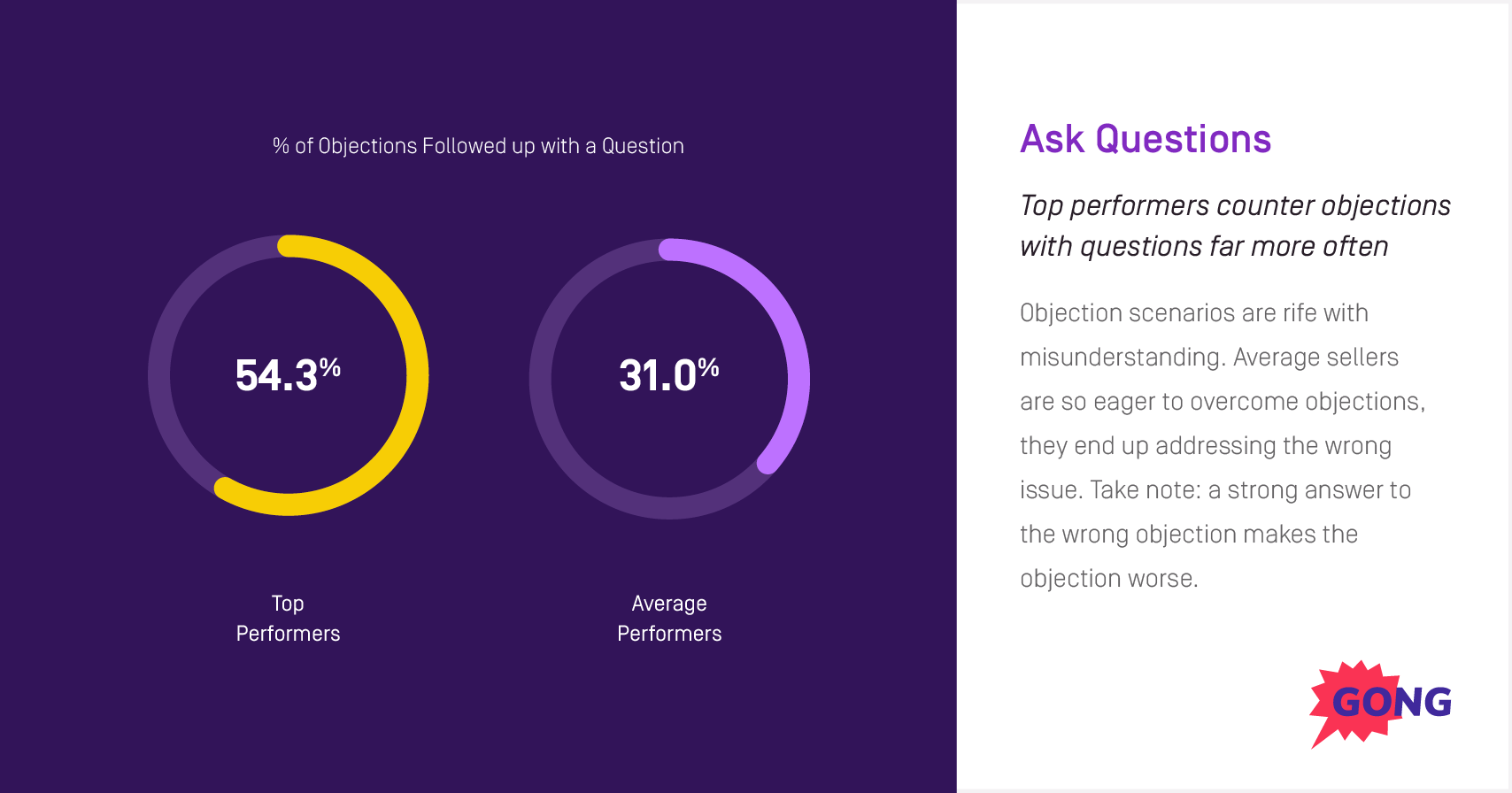
They make sure they understand exactly what the prospect is asking before they reply.
Asking questions about an objection is an easy move that helps you avoid sticky situations.
3. Better Pricing Discussion = Shorter Sales Cycle
The reps with the fastest win rates raise pricing-related topics three or four times on a sales call.
But wait.
Let’s back up a step here because you probably don’t love talking about pricing — no matter how seasoned you are.
One of the most common worries is around timing.
When is it the right time to talk about pricing?
When is it too late or too soon?
Lucky for you, our data shows there is a right time to mention pricing.
And it’s much later than you’d probably guess.
It’s three-quarters of the way into a sales call.
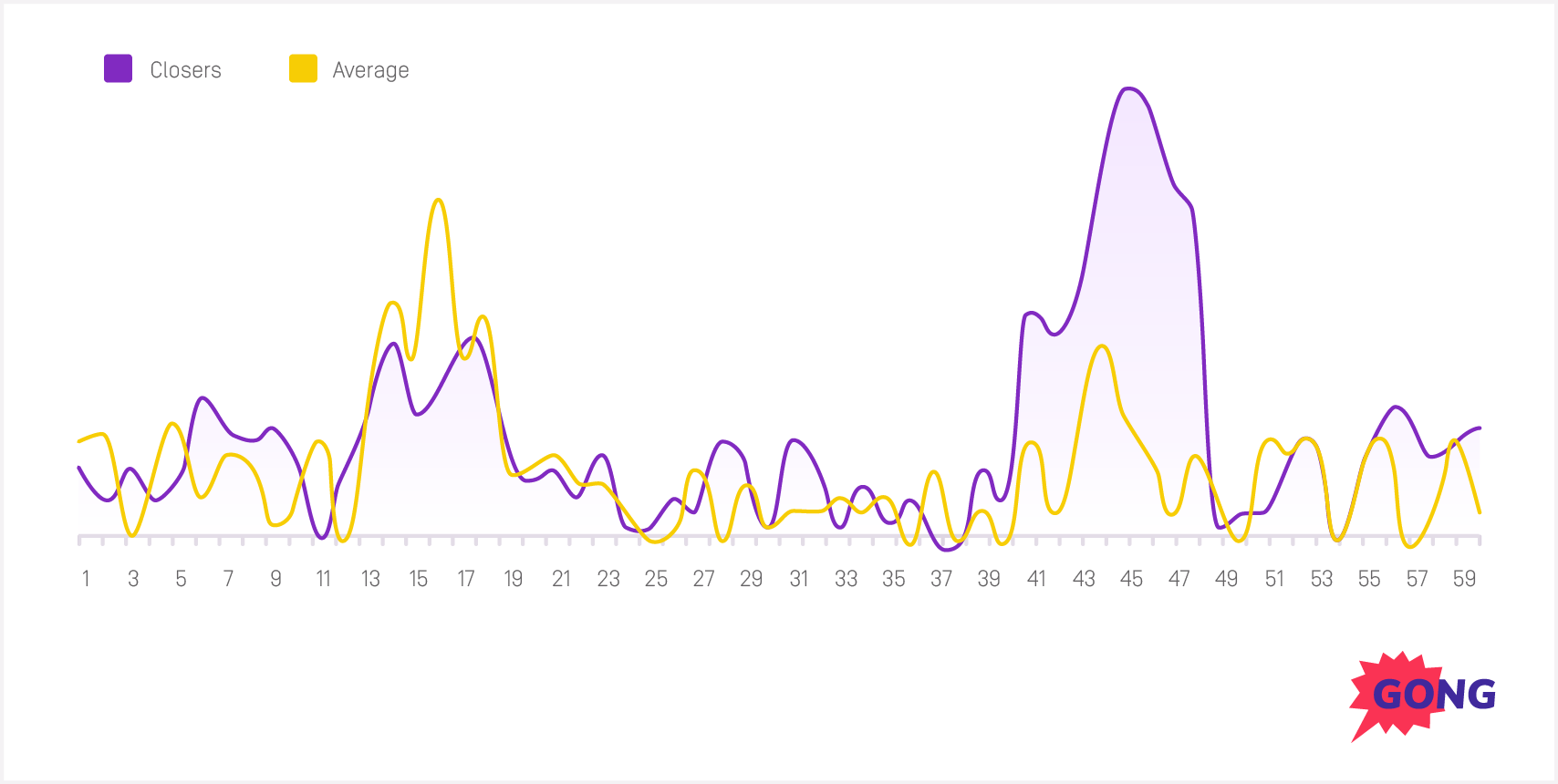
While top performers and average performers both mention pricing at the 13-20 minute mark, top reps hold their main pricing discussion off until the end.
By then, they’ve had a chance to impress the prospect with the product, making pricing less of an issue.
So what do you do if your prospect raises pricing early on?
Avoid that by outlining a clear agenda before the call and putting pricing at the end.
4. Even if You’ve Shortened Your Sales Cycle, Constantly Iterate and Improve
When you want to learn how to do something well, you go to an expert.
So who are the experts on your team?
The top 10-20% of your sales reps.
Make their best habits standard across your team.
If more sales reps behave like them, more sales reps will generate their outstanding results.
You probably know who your top performers are, but check these data points just to be sure:
- The pipeline they create
- The number of deals they close
- The amount of revenue they bring in
- Their overall sales cycle length
When you know who your top reps are, you can standardize their habits across your team.
Here’s what you’ll want to find out:
- What are the major steps in their sales process?
- How do they build trust with the prospect at the beginning of a call?
- How do they balance talking and listening?
- How do they make sure they understand their prospect’s needs and priorities?
- How do they formulate and ask business-focused questions?
- How do they describe your product’s value instead of pitching a list of features?
- How long does their entire sales process take?
- How much time elapses between each step?
Be sure you understand how they move their prospect from one phase to the next.
5. Offer Up Therapist-Grade Listening Skills Throughout the Sales Cycle
No surprises here.
We all know we’re supposed to listen carefully to other people.
But you may be shocked by the degree to which talk-to-listen ratios can affect the success of a call, and even the overall sales cycle.
Top performers speak less than 50% of the time.
The highest-converting talk-to-listen ratio on B2B sales calls comes in at approximately 43:57.
Average performers talk a fair bit more, at 68% of the time.
And low performers speak for a whopping 72% of the conversation. (Please make it stop.)
You know what to do here.
Zip it. Listen. And reap the rewards.
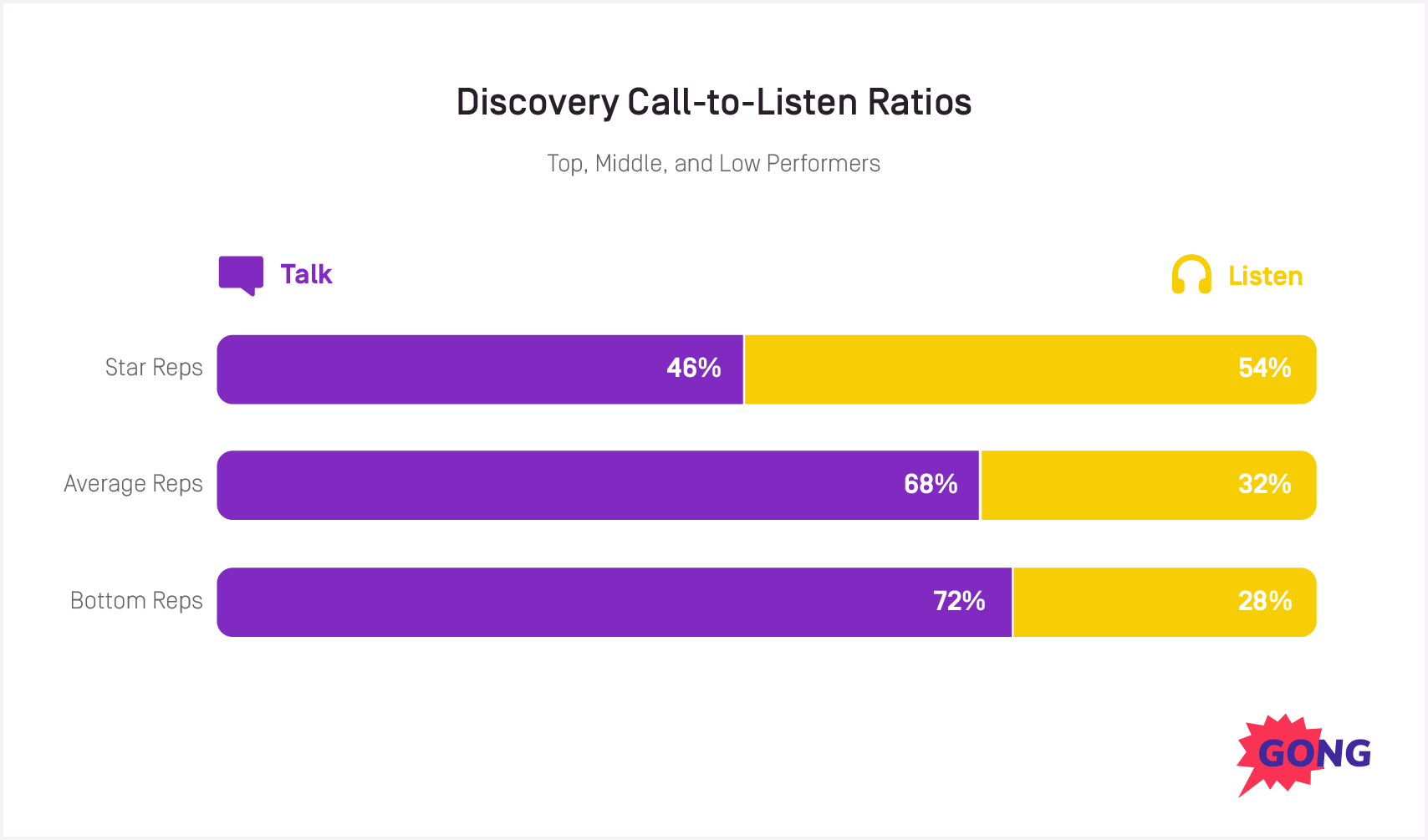
6. Keep Your Team Wanting to Sell for the Entire Sales Cycle
What motivates your people? Finding out is one of the biggest favors you can do yourself as their leader.
Do they love stats? Titles? Teamwork? Money? Kudos?
If you can tap into what makes them tick, you’ll know how to push them in a way that’s healthy, sane, and motivating.
Some simple questions can help you get to the heart of what drives them, even if they don’t know the answers themselves.
In your one-on-ones, ask about the high point of their last work week. Or about the best call they had and what made it great. Maybe get into their longer-term career aspirations.
Whatever you ask, listen for clues about what gets them to light up.
7. Use Powerful Language Throughout the Sales Cycle
Trademark words and phrases.
Everybody has them.
Truth is, some work better than others and those are the ones you want your team to use.
We’re gonna share our favorites with you.
Not surprisingly, our choices are backed by data that shows they really work.
Imagine: This one is at its most powerful when you tell the customer what to imagine. Help them picture what they can accomplish with your product with something like this: “Imagine ramping your reps 30% faster.”
Use case language: Most of us talk about what a product does and how it works. Instead, describe the tasks your product helps the customer perform. Use action verbs like “coaching”, “onboarding”, and “analyzing”.
Successful: Just saying the word success helps conjure up wins. The best reps say it four to six times per hour on their sales calls.
Fair: Save this one. It’s special. You should only use it 1.7 times over all the calls that span a deal. So when should you use it? When you want to move your prospect to next steps, with something like this: “I’m happy to walk you through this demo. And if you like what you see, we’ll schedule a concrete next step. Is that fair?”
The customer’s first name: It’s old school. And it works. On average, top salespeople use their customer’s name 4.1 times per hour.
Decisive language: Clear and decisive language sends a powerful message about your confidence in your product. Don’t hesitate to say definitely, certainly, and “We can do that.”
Client, not customer: People sell to customers. But clients are under your guidance, advice, and even protection. If you were a prospect, which one would you rather be?
Probably: Balance your decisive language with cautiously optimistic language. When you say probably, it tells customers you’re realistic and honest.
8. Bring in the Rest of Your Team
Backup is your friend.
Team selling works.
Both statements are true and we have the numbers to prove it:
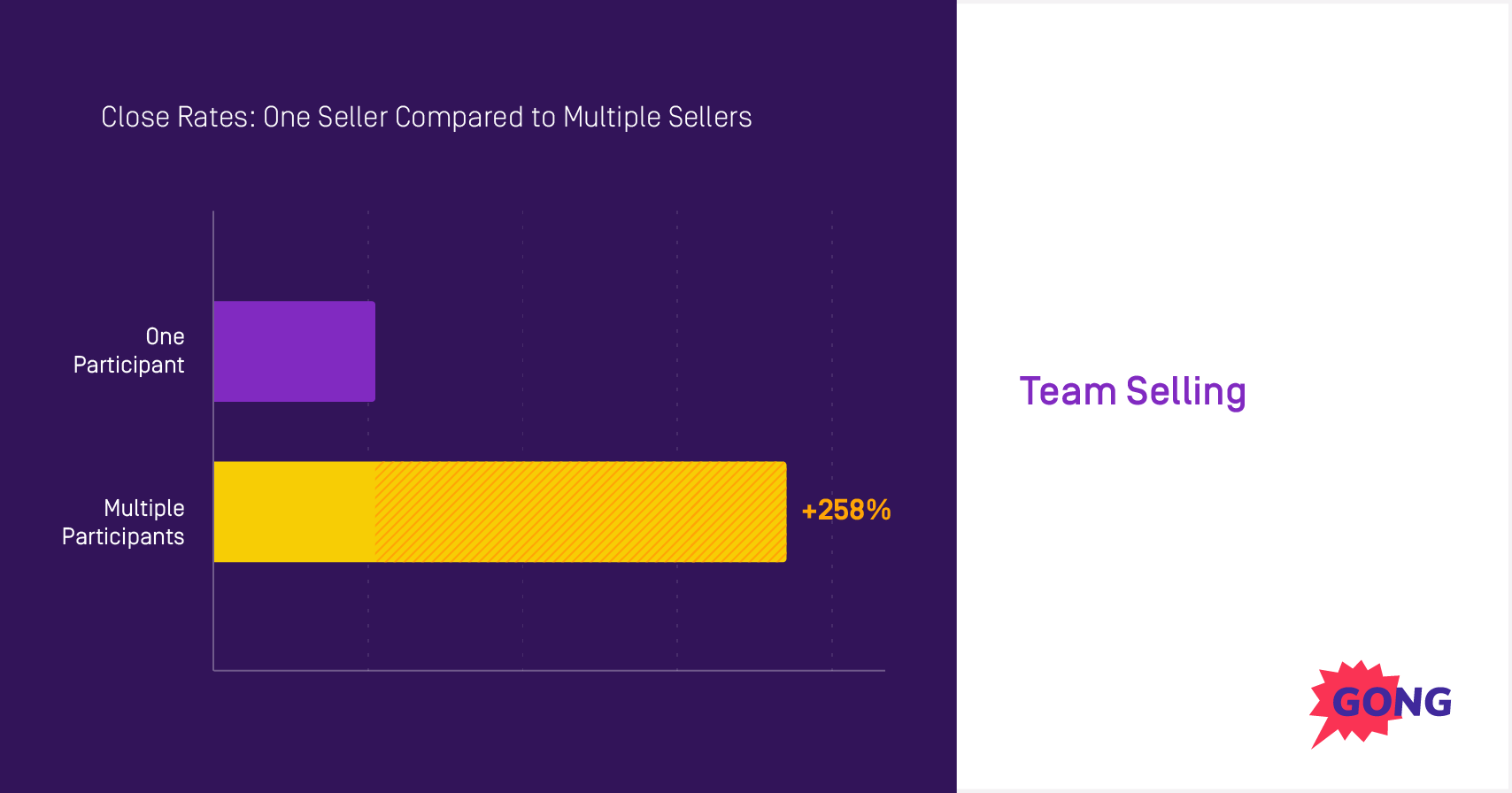
There’s an incredible wealth of knowledge on your product team, marketing team, and customer service team.
Your capacity to use that knowledge to solve client pain points can be a serious game changer.
Having more than one person from your organization on just one sales call makes you 258% more likely to close the deal than if you made the call solo.
To repeat, that’s 258% more likely to close! Mind-boggling.
Rather than feeling threatened by sharing their sales space, the best reps step into cooperation.
They recruit their CEO, sales manager, sales engineer, and other relevant stakeholders to join them on sales calls.
(CAUTION: Don’t have more than four people on your end of the call, or the rate of return will drop).
Lean on your peers (and seniors) throughout the sales cycle, and return the favor when they need you.
9. Leverage Data and Pull Actionable Insights
We’ve said it before and it bears repeating.
Data is a gift waiting to be unwrapped.
It can tell you where your reps need help. That’s a precious offering, because they may not be able to tell you themselves.
Use your sales tools to take a peek at their past and current data.
It should paint a clear picture of where they’re killing it and where they’re falling short.
At their next one-on-one, share key stats with your rep and let them know how they compare to the team average.
Look at metrics like the number of calls your SDR makes or the demos they set. Or how many leads your AE is converting and how many they’re closing.
Your data will show you exactly where your efforts can do the most good.
Using conversation intelligence technology like ours will help you go a step further by telling you exactly where each rep is struggling during sales conversations.
10. Use Laser-Focused Precision to Get Your Sales Cycle Where You Want it to Be
Questions are a sign that a prospect is curious and engaged.
If concerns and queries pop up during your demo, that’s a great sign.
In fact, during their demos, leading salespeople get nearly one-third more questions from prospects than their average or low-performing peers.
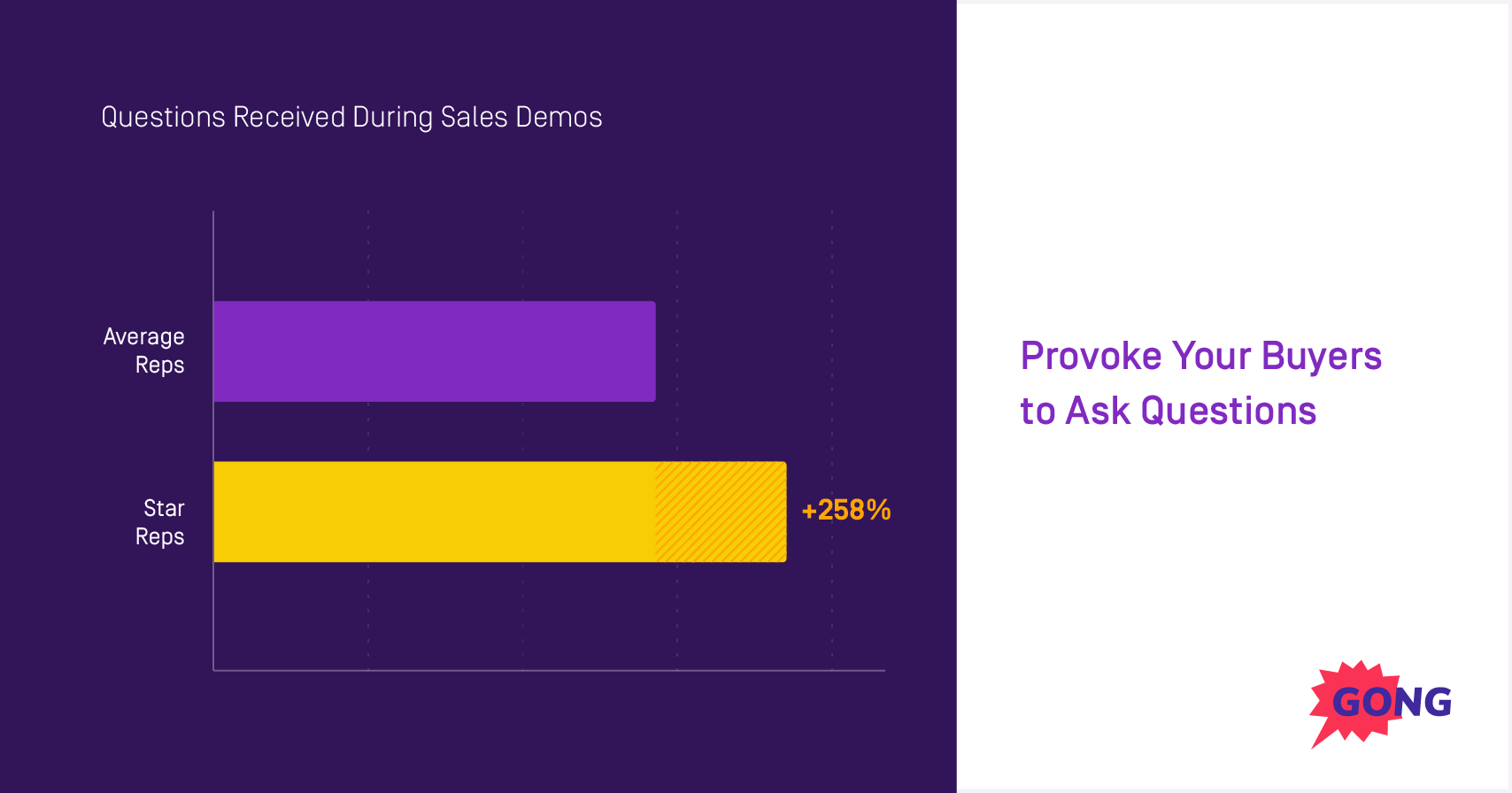
They create a space for questions using this smart combo: they offer up clear information and ask fewer questions.
They leave room for the prospect to get curious and say what’s on their mind.
Smart reps use these questions to learn more about what their prospect is interested in and then tailor their demo accordingly.
Encouraging questions is a perfect way to focus your demo on topics that are top-of-mind for your prospect.
11. Get Visibility into Your Sales Conversations
This is the new kid on the block for getting visibility into sales conversations.
Conversation intelligence technology is an emergent category of sales engagement technology that helps sales leaders get visibility into all their teams’ sales conversations quickly and easily.
And that scalable visibility is the key to closing the “gap” between your top reps and the “middle-of-the-pack”.
The technology also makes the “recording” part automatic for account executives, skipping all of the manual steps I outlined above.
The way conversation intelligence works is it records, transcribes and analyzes all of your team’s sales conversations so you can drive sales effectiveness across the board.
For any team that has grown beyond 20 or 30 sales reps, this is truly the best option.
Conclusion
Remember, data is what separates these tips from everything else on the web.
That’s how we know they work. We’ve ground through the data so you don’t have to.
In combination, these 10 steps are game changers.
Use them across your sales cycle and we know you’ll see a difference in your win rates.
And if you’re curious how to rev up your sales cycle from the start, take a look at our Discovery Call cheat sheet.
This downloadable guide highlights the 5 elements of elements of deal-closing discovery calls, so you’ll know exactly what to do before you even pick up the phone.

